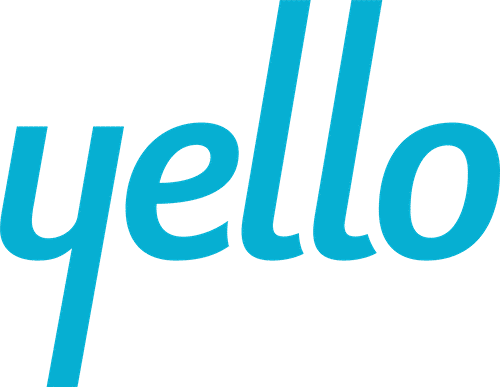Delivering the ultimate candidate experience begins before the first handshake and ends well after an offer has been extended. Your organization’s employer brand and future success is largely impacted by the hiring processes — from candidate discovery to post-interview measurement — used to recruit candidates. Keeping the candidate experience at the forefront of the hiring process will help to attract, recruit and hire top talent. Follow this list to create the ultimate candidate experience in 2017.
Candidate Discovery Experience
Create a positive candidate experience with your company before applicants apply for a position. The below steps will help capture candidate interest before the application is submitted.
Ensure visibility. When candidates are searching for their next position, provide transparent insight into your company’s culture. Use your website’s career page to feature employee spotlights that link to their LinkedIn profiles, share photos that convey the culture and create employee testimonial videos to offer a more personal view into your brand.
Create realistic job descriptions. Audit your job descriptions to ensure they accurately and honestly depict the role. Clearly communicate the required skills, qualifications and goals without inflating or playing down responsibilities. For example, if you are looking for someone to make tactical website updates, avoid language that says this person will set strategic website strategy. This will avoid the costly mistake of hiring the wrong person for the role, and finding yourself in the same position a few months later after this employee quits for a job that is a better fit.
Develop a talent community. You may not have openings for every job seeker right at the moment that person is searching. Don’t neglect passive candidates who could be a great fit for your organization when the opportunity arises, particularly current college students. Building a talent community provides a venue for future applicants to remain engaged with your organization until that position becomes available.
Nurture future candidates. Nurture and communicate regularly with the passive candidates in the talent community. Create a quarterly talent community newsletter that includes company updates, open positions, recent content, product updates, etc., and check in individually with high-potential candidates.
Pre-Interview Experience
After applications are submitted and phone screens are complete, candidates’ nerves can be at an all-time high. The steps below will help ensure applicants have a positive experience with your organization, as soon as they submit the application.
Acknowledge each application. Confirm receipt of each application as soon as it is received. Use recruitment software to send automatic, employer-branded confirmation emails that provide links to your social media sites or content that highlights your brand, culture and employee videos.
Outline the hiring process. Provide applicants with a clear roadmap of the selection process. Let them know the overall interview timeline, team members they will meet, background check criteria, any required personality tests, etc. These items help the candidate feel more informed during the interview process, and can result in less follow-up emails to you. Create a hiring process overview template as a guide for every applicant. This will likely be tweaked by applicant and position, but will eliminate the need to create a new version for each candidate.
Make scheduling easy. Coordinating motivated candidates’ and busy interviewers’ calendars doesn’t allow for much scheduling flexibility. Reduce the number of back-and-forth logistical emails, and use interview scheduling software to provide candidates the ability to schedule interviews directly, eliminating your team from the middle of the scheduling matrix. Candidates can access a self-service platform to allow them to select interview slots that work best with their schedules, reschedule interviews without disrupting your staff and also allows your team to schedule multiple candidates at once.
Keep lines of communication open. Provide candidates with a consistent and direct point of contact with your organization. Leading up to the interview, provide frequent updates even if you don’t have any news to report; a brief email to touch base goes a long way to calm eager candidates’ frayed nerves.
Ease pre-interview jitters. Candidates have a lot on their minds leading up to an interview. Will they make a great impression? Do they have the right blend of skills and experience? Do they align with the company’s values and mission? Take the guesswork out of these questions by giving candidates the information to help them prepare. Provide the names and titles of the people with whom they will meet, allowing them to do their own research prior to the interview. Include a hyperlink to a map of your office location, along with details on parking or nearby public transportation options. Send an email the day before the interview to build excitement and confirm any last minute details.
Interview Experience
Candidates are interviewing your company, as much as you are interviewing them. Make sure they leave your office excited about a potential opportunity with your company by following the below steps.
Develop an official greeting process. Designate a particular person to greet each candidate as soon as they enter the office. Make sure they offer a warm welcome, hang up their coat, offer them a beverage, show them where the restrooms are located and give them an office tour.
Simplify the experience. Provide your team a place where every team member can access all candidate data—resumes, video interviews and hiring team feedback. Any recruiting team member, at any point in time, should be able to access all candidate data from a central location (such as a shared drive or a candidate relationship management solution) to decrease the time to make an offer. If one recruiter is out during part of a candidate’s interview process, every team member should be able to easily to provide support. While delays are often inevitable, inaccessibility of candidate information should not be the cause.
Over-communicate. Throughout the interview process, candidates should know exactly where they stand. Lessen the risk of losing top talent to faster-moving companies by ensuring a timely and collaborative candidate communication strategy is in place. Incorporate the following touch points into your candidate experience strategy: (1) let applicants know as soon as possible if they were selected for an interview; (2) post-interviews, let candidates know if they are moving to the next round; (3) let all candidates know as soon as a final offer is accepted. Regardless of the interview stage, respond to all candidate inquiries promptly, thoroughly and professionally.
Automate interview feedback. Gathering interviewer feedback can be a time-intensive, inefficient process. Delayed interviewer feedback can even result in losing top talent to a competing job offer, adding time and money to the hiring process. Use evaluation management software to collect interviewer feedback in near real-time on web or mobile, while information and impressions are still fresh. Providing feedback in a timely manner shows respect for your candidates, whether they are on track to become your future colleagues or not. Update candidates as soon as you have feedback from the interviewing team after each interview stage.
Survey candidates throughout the interview process. Check in with candidates to measure the candidate experience throughout the interview process. This will help address issues as candidates progress throughout the process, and you can intervene to resolve any potential negative experiences. After every stage in the interview process, do a quick check-in with each candidate and send them a few follow-up questions as an on-going pulse check.
Post-Interview Experience
Ending every interview process on a positive note and creating opportunities for candidates to provide feedback helps talent acquisition teams continually enhance the recruiting experience. Follow the below to effectively understand how potential new hires view your company.
Deliver bad news over the phone. Your team should call the candidates who aren’t advancing instead of emailing. Most candidates have to take a day off of work to interview, dry clean their interview outfit, print resumes and pay for transportation or parking. The courtesy of a phone call to let them know your company is moving forward with other candidates demonstrates mutual respect. Additionally, halting all communication with the candidates who aren’t advancing in your interview process can lead to long-term consequences. These candidates could have an excellent referral network, or be a top future employee after they gain a few more years experience.
Gather post-process insight. Create a brief, anonymous survey to send at the end of the hiring process to gain honest insight in your company’s interview experience. Surveying candidates post-interview, whether they have accepted or rejected your offer, is a key component of measuring the candidate experience. The survey results will provide insight into what worked and what you need to refocus on going forward; use this information to continually improve your candidate experience. Circulate a quarterly report with the summarized data, to keep stakeholders informed on candidates’ reviews.
Include key questions. To keep candidates engaged and more likely to complete your survey, only ask the questions that are most important to your talent acquisition goals. The following are sample questions that can help form your survey content.
- Was the position clearly explained to you throughout the process?
- How was the communication throughout the process?
- How was your in-person interview experience?
- Would you refer your friends or family to apply for a job?
- What was your primary motivation for applying to our company?
Learn more about delivering the ultimate candidate experience through the use of mobile apps and scheduling software.


